A lot of people love food made with palm fruit but the processing of the palm fruits manually using mortar and pestle is so tedious, they shy away from cooking such food. Others resort to canned palm nut cream concentrate, nothing wrong with that, just that it is a divided house when it comes to the taste.
I have always loved kitchen gadgets, anything to make life easier in the kitchen, to enable me to concentrate on cooking the best tasting food that I can. Most times I get somebody to process a large batch of palm fruits, which I boil down and freeze, that way, I can have my Ofe akwu (Banga soup) ready even before the white rice is cooked. One day on a thread in a Facebook group (So You Think You Can Cook) to which I belong, I asked if anybody knew any gadget that can process palm fruit, lo and behold, Dooney of Dooney’s kitchen replied and said food processor. I bought palm fruits immediately and the result was unbelievable. I have had this equipment all along and been suffering this gruelling task all this while.
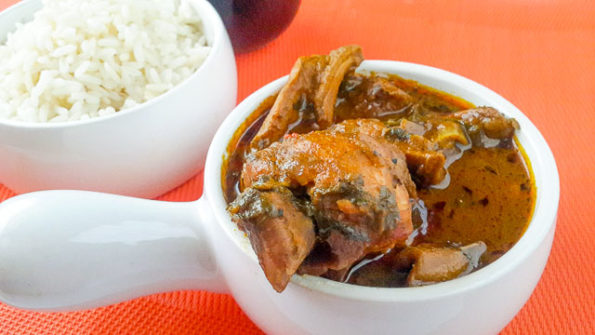
So firstly, you need to buy palm fruits. When buying palm fruits, be it agric, which is a hybrid of sorts, the native osukwu, which is sweet and flavoursome, akwu ojukwu etc they should be yellow and fresh at the end where it was separated from the bunch. If that end has darkened considerably, it is no longer fresh and will produce palm nut extract that sticks to the roof of the mouth, you definitely don’t want that. The flavour of the palm nut extract considerably impacts the dish e.g Stew akwu (palm fruit stew), Ofe utazi, Ofe ora, Ofe onugbu (Bitterleaf soup), Okpa, Yam porridge etc.
To process Palm fruit using a food processor
Wash and put palm fruit in a pot and add enough water to cover it.
Place over high heat and boil until the palm fruit is cooked.
There will be a light film of oil floating on top of the cooking water.
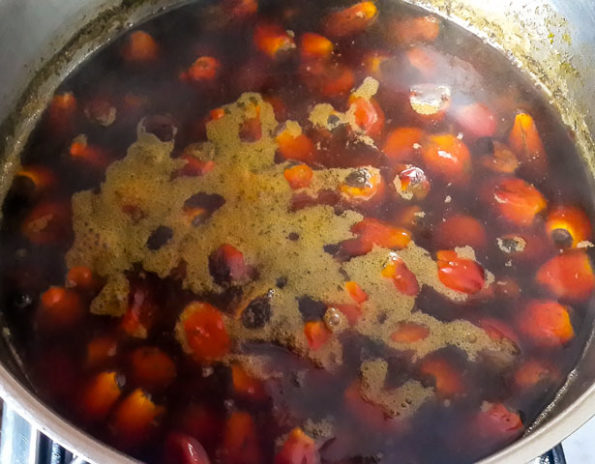
It will be soft and the flesh will break open very easily when pressed between your fingers or give way when pressed with a fork.
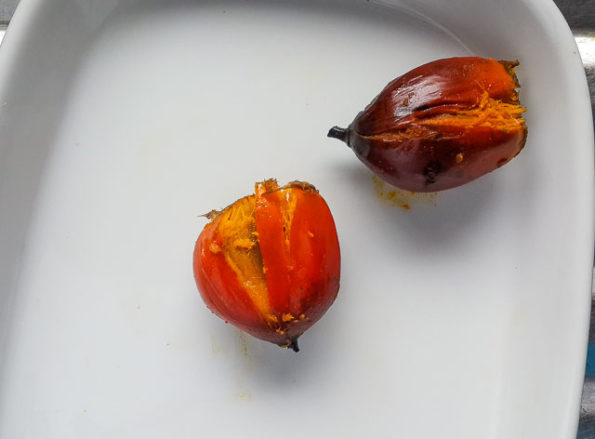
Place a medium pot of water to boil.
Drain the palm fruit and while still piping hot, pour into the bowl of the food processor according to its capacity.
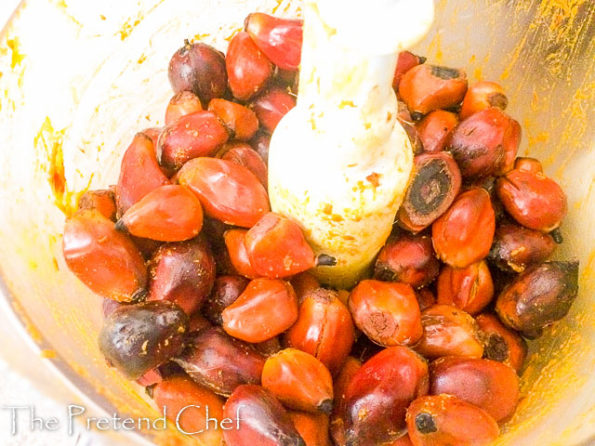
Process on high for about 2 minutes, check if there are still a few kernels that are still intact. Repeat and it is done.
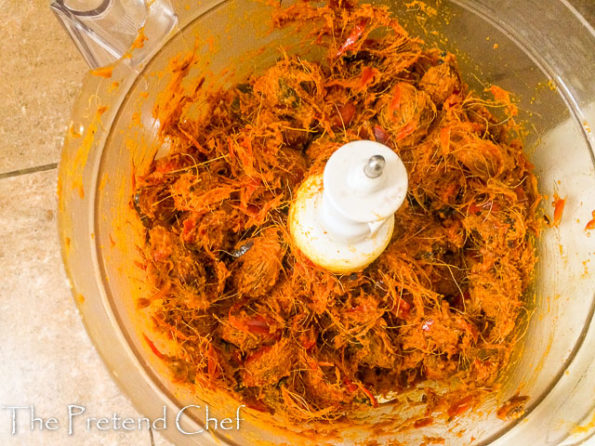
Empty into a large bowl. Pour boiling water into it and stir well.
Be careful with the amount of hot water used because you will eventually need to boil the extract until it has thickened to the consistency needed for your recipe.
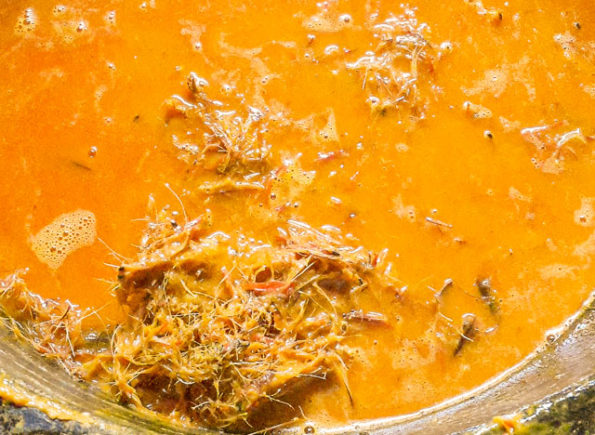
Set a sieve over a clean pot, pour extract into the sieve and squeeze out as much extract as possible from the fibre. Repeat if the volume collected is too small, most times there will still be a lot of palm juice remaining in the fibres.
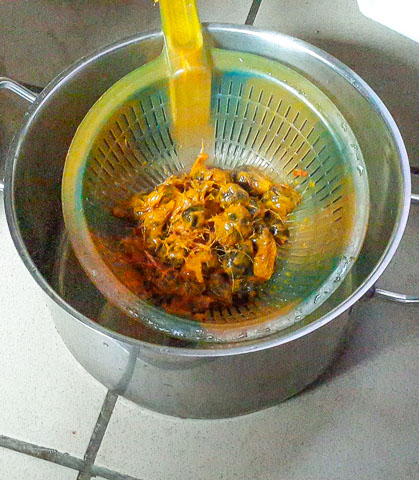
Leave the extract to settle for about 5 minutes then pour into another pot being careful not to pour in the last bit of extract. This is because if there is sand or kernel pieces they normally will settle at the bottom.
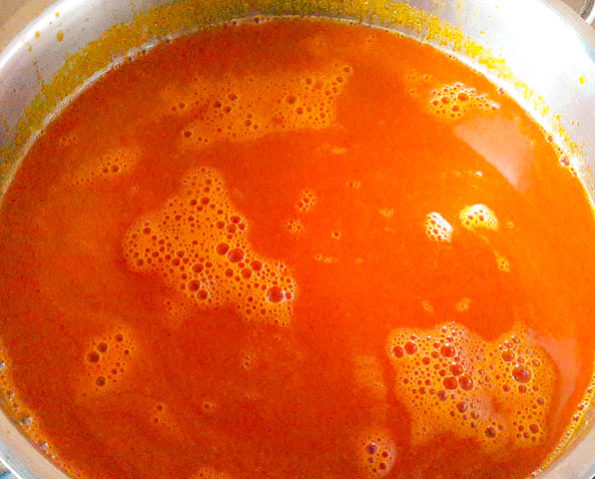
Boil over high heat to the consistency needed.
It can be stored in the freezer for up to 6 months or more.
To store in the freezer, boil till it becomes a very thick slurry, this way, the volume will be very small and manageable.
It will not take up too much space.
To use reconstitute with water, meat or vegetable stock.
The fibre let behind will look like this.
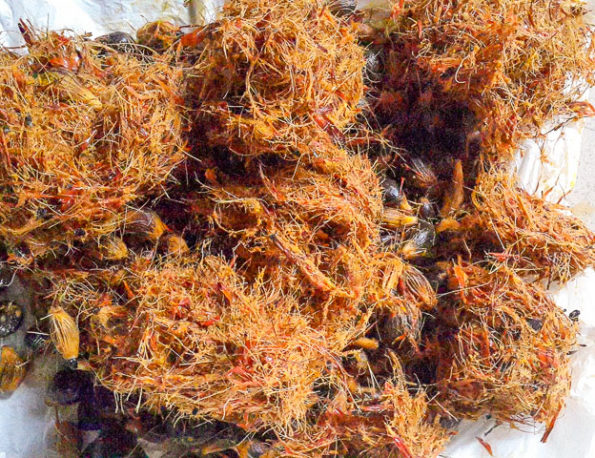
Hope you are as excited as I am about this.
Check out How to peel beans using a food processor, How to make homemade Coconut milk, How to process cocoyam using a food processor and How to make beans powder.
Do you have any comments, questions or suggestions, please leave a comment below.
Subscribe to the blog for instant notifications of new recipes, leave your email address in the box above.
Please share this recipe using the share buttons.
Follow on Instagram: @thepretendchefofficial, Twitter: @thepretendchef Facebook: https://web.facebook.com/thepretendchef/, Pinterest: https://www.pinterest.com/thepretendchef/
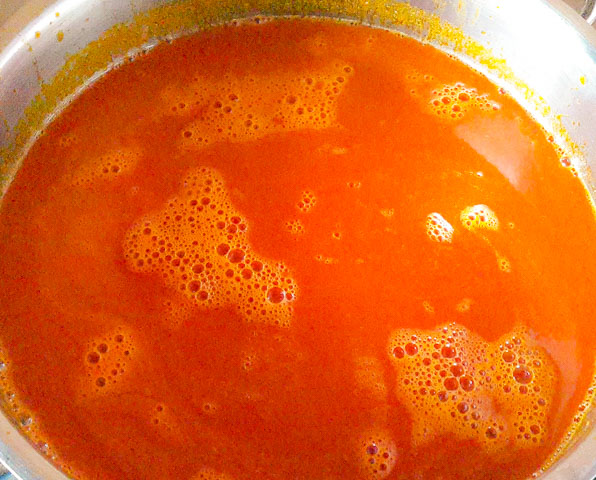
 I am Ganiru, a wife, a mother, a food blogger, a chef, an author and an accountant. I love to cook and write about food, especially Nigerian and afro-centric food...
I am Ganiru, a wife, a mother, a food blogger, a chef, an author and an accountant. I love to cook and write about food, especially Nigerian and afro-centric food...
Pingback: Ofe Akwu, Palm nut soup, Banga soup - The Pretend Chef